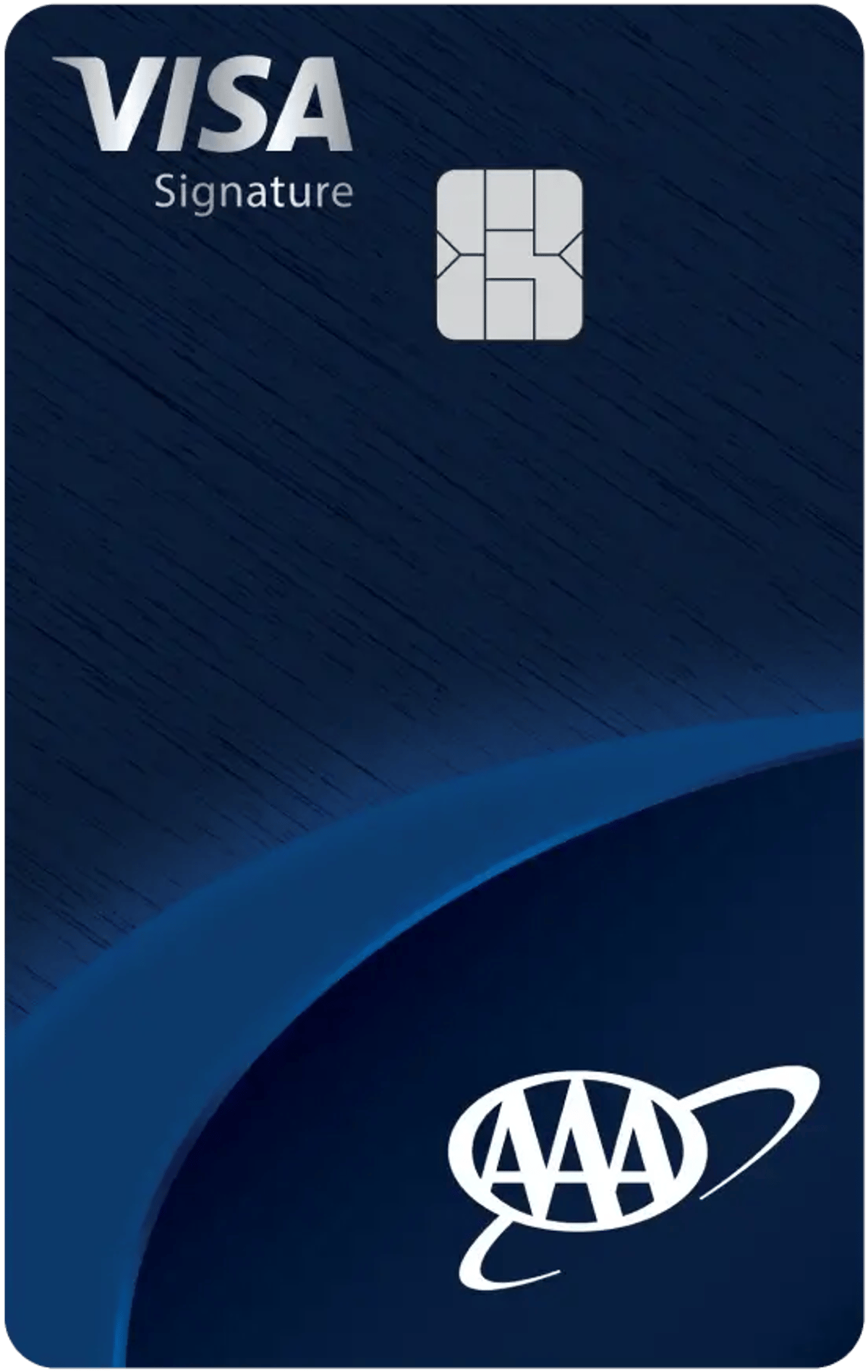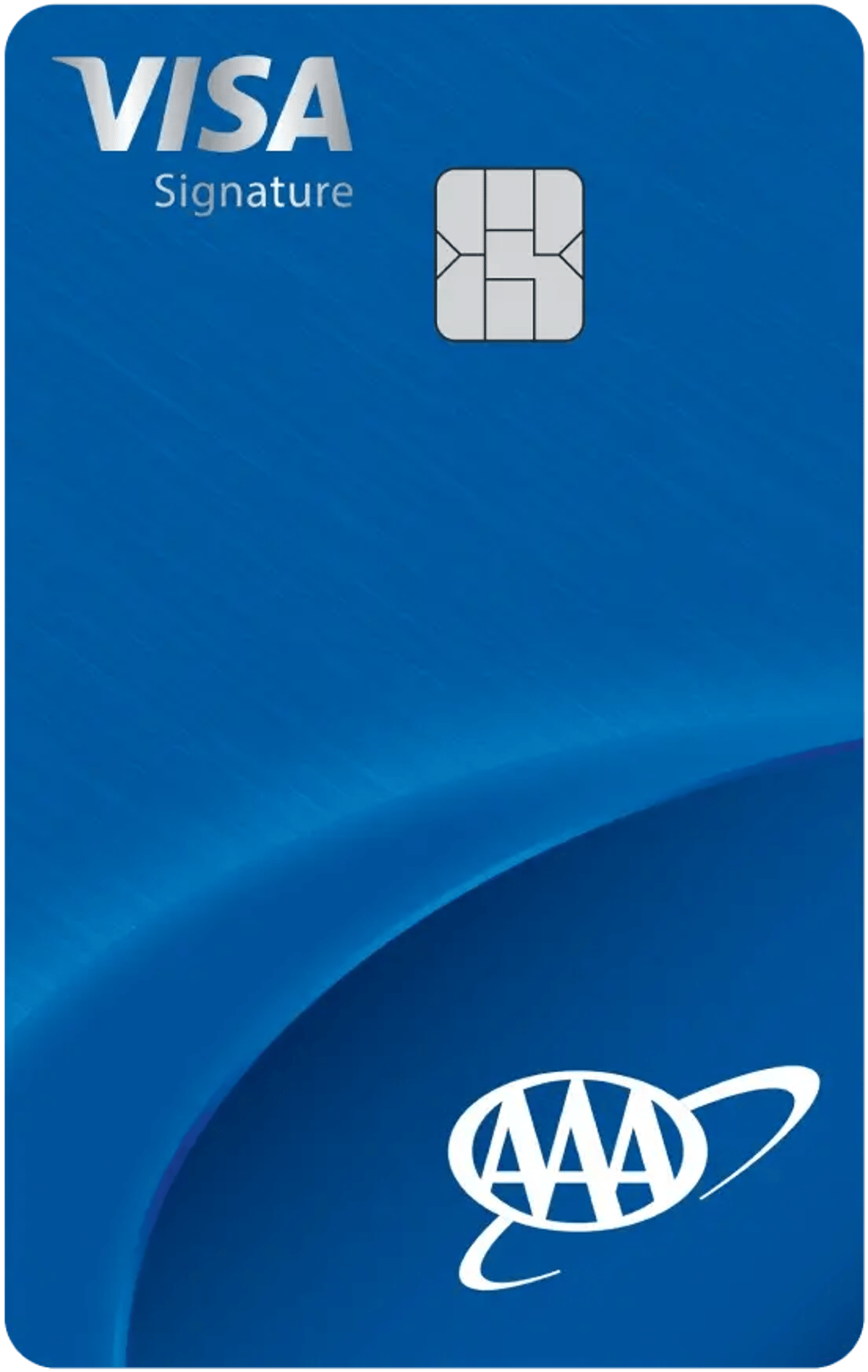
Money Solutions
Cards for everyday use
AAA Daily Advantage Visa Signature® Credit Card

- 5% cash back1On grocery store purchases.
- 3% cash back1Gas and EV charging, wholesale clubs, pharmacy, streaming services, and AAA purchases.
- No annual fee and no foreign transaction fees4
- $100 statement credit3When you spend $1,000 within the first 90 days of account opening.
AAA Travel Advantage Visa Signature® Credit Card

- 5% cash back2On gas station purchases.
- 3% cash back2Grocery store, restaurants, travel, and AAA purchases.
- No annual fee and no foreign transaction fees4
- $100 statement credit3When you spend $1,000 within the first 90 days of account opening.
Automotive Financial Solutions
Auto financial services provide tailored solutions for buying vehicles, offering flexible repayment options to suit diverse needs.Money Saving Tips and Articles
Guidance and advice to make the most of your hard-earned money.
Browse moreCustomer support
1. Offer is exclusive to AAA Daily Advantage Visa Signature Credit Card holders enrolled in the AAA Daily Advantage program. For offers associated with a specific category, earnings will only be awarded if the merchant code for the purchase matches a category eligible for the offer. Each merchant is assigned a code by a third party that indicates the merchant’s area of business. Comenity Capital Bank does not have the ability to control assignment of merchant codes. Maximum of $500 USD cash back earned in a calendar year at grocery stores, wholesale clubs and gas stations combined. After that, purchases will earn 1% cash back for the remainder of the calendar year. Excludes third party insurance and offers, automobile extended warranties, and trip insurance. Cash Back can be redeemed as Statement Credits, Direct Deposit, Rewards and qualifying purchases at participating AAA locations. This rewards program is provided by Comenity Capital Bank and its terms may change at any time. For full Rewards Terms and Conditions, please see AAA.com/AdvantageDailyTerms.
2. Offer is exclusive to AAA Travel Advantage Visa Signature Credit Card holders enrolled in the AAA Travel Advantage program. For offers associated with a specific category, earnings will only be awarded if the merchant code for the purchase matches a category eligible for the offer. Each merchant is assigned a code by a third party that indicates the merchant’s area of business. Comenity Capital Bank does not have the ability to control assignment of merchant codes. Maximum of $350 USD in cash back in a calendar year on the 5% category, and earn 1% cash back on all net eligible purchases thereafter. Excludes third-party insurance and offers, automobile extended warranties, and trip insurance. Cash back can be redeemed as statement credits, direct deposit, rewards and qualifying purchases at participating AAA locations. This rewards program is provided by Comenity Capital Bank and its terms may change at any time. This rewards program is provided by Comenity Capital Bank and its terms may change at any time. For full Rewards Terms and Conditions, please see AAA.com/AdvantageTravelTerms.
3. Valid one time only. Offer will be received within 1-2 billing cycles after qualifying spend.
4. For new accounts, as of October 2025: Variable Purchase and Balance Transfer APRs of 17.99% - 31.99% based on your credit worthiness at the time of account opening and the Prime Rate. Variable Cash Advance APR of 32.99%, based on Prime Rate. Minimum Interest Charge is $3. Balance Transfer Fee of the greater of $10 or 5% of the transfer. Cash Advance Fee of the greater of $10 or 5% of the advance.
Credit card offers are subject to credit approval.
AAA Travel Advantage Visa Signature® Credit Card or AAA Daily Advantage Visa Signature® Credit Card Accounts are issued by Comenity Capital Bank pursuant to a license from Visa U.S.A. Inc. Visa is a registered trademark of Visa International Service Association and used under license.












